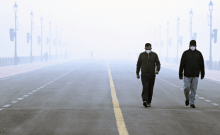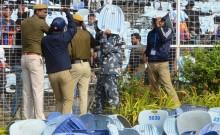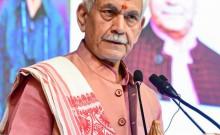Bringing peace into the war-torn West Bank Middle East region has so far been perhaps a mission impossible. The Israel-Palestinian war has left thousands homeless, killed hundreds and resulted in damages escalating to billions of dollars for the Palestinian economy.
Indian Foreign Minister Sushma Swaraj is currently in Israel on a two-day visit. Swaraj held talks on strengthening defence ties with the Jewish Nation. Indian foreign minister also called on Israeli Prime Minister Benjamin Netanyahu on Monday.
At the same time, Israeli troops on Monday shot and wounded a Palestinian teenager, who reportedly stabbed a pregnant Israeli woman in the Israeli-occupied West Bank region, according to Reuters.
Since 1 October, 2015, Israeli forces and armed civilians killed 142 Palestinians, while the majority to be killed were in clashes with security forces, around 90 of which are believed to have been assailants, the report added.
The new wave of bloodshed led to fears of an impending Palestinian uprising. And during the same period, car-rammings, shooting attacks and Palestinian stabbings reportedly killed 24 Israeli and one US citizen.
Israel for long has been blockading its fences with the Gaza strip and Palestine. Implementation of the "closure" against the Hamas group and the Palestinians in the West Bank would eventually turn the entire occupied territory into one big slum, a Middle East monitor group Al-Monitor noted.
Collapsing economy
The West Bank witnessed a spurt in economic growth between 2007 and 2010 on account of increased donor aid, improved security conditions and decreased Israeli restrictions on movement.
"West Bank GDP climbed from $3.3 billion in 2007 to $4.4 billion in 2010, while per capita GDP went from $1,580 to $1,924, an increase of 22%. The growth looked even better when viewed over a longer period: in 2010, West Bank GDP was 50% higher than in 2000, and 124% higher than in 1994," David Mokovsky, Director of the project on the Middle East process, told The Washington Institute.
However, the wave did not last long. A World Bank report detailed how Israeli restrictions in the West Bank affected Palestine's economy to the tune of about $3.4 billion a year, or 35% of its GDP.
"Israeli occupation in Palestinian territories, the barrier it has constructed along and within the West Bank as well as its land, air and sea blockade in the Gaza strip have placed severe limitations on the success of Palestinian economic policies," a report published by The Guardian stated.
To ride out its already distressed economy, Palestinians in West Bank need an annual growth of about 6-7%, but World Bank data suggests that the growth in the region remained at only 2% in 2013, down from 9.4% in 2010-2011 and 5.6% in 2011-2012.
Due to declining economic growth, unemployment has gone up (almost 20%) in the West Bank region and one in every four people remains unemployed, Al Monitor report added.
The average wage in the region is about $572 a month, which is less than a quarter of the average wage in Israel. There was no significant difference in level of prices and cost of living in Gaza and the West Bank. Public sector workers, however, earned about $406 a month.
Ever since Palestine split up into West Bank and Hamas-controlled Gaza strip, the former has seen an inflow of foreign aid to boost its economy, while the later remains in a slump.
In Gaza, locals use four Arabic terms commonly: Hissar (Siege), Batelah (Unemployment), Kassaf (bombing) and Mukta'eb (depressed), which represents the economic situation of the region. "They are all-related" Abu Ahmad, an interpreter who works with foreign journalists told AlJazeera.
With its fertile land, blue seashore and a young workforce, Gaza holds the promise to be the powerhouse of the region, but the blockade by Egypt and Gaza would never let the strip of land turn their dreams into realities.
A few have their way in nearby Gaza
In another conflict-inflicted zone, the Gaza strip, amongst the vast majority of the poor, a few wealthy people co-exist as well. Majority of the people in this area, like their folks in the West Bank region, work and survive on less than $10 in a day. However, a few people have investments worth millions of dollars, a Channel News Asia report noticed.
According to a World Bank report, Gaza's poverty rate remains at 65%, while the rate of unemployment is estimated to be 44%.
"Nine years of a blockade and three wars on Gaza created a class who benefited and made very high incomes. There is also the middle class that is almost gone, because of the blockade, the high living costs, poverty, and unemployment rate," Sameer Abu Mudalala, an economics professor at Al-Azhar University was quoted as saying by Channel News Asia.
The elite wealthy class of Gazans build their businesses on real estate, worth millions of dollars. Among them are some who are willing to pay for a lavish lifestyle and have kept their hotels and restaurants by the beach and refugee camps to attract customers.
Rate of fancy hotels, resort and restaurants opening in the region is in defiance with the deteriorating economical and political situation of the war-torn region, where explaining the problem is easy but solving it remains difficult.










